APRIL 19 – SEPTEMBER 17
On April 19, 2017, the Zarya Center for Contemporary Art will open “Soviet Design, 1950–1980.” Assembled by the Moscow Design Museum, this unparalleled project has already toured Moscow and Rotterdam, and will be on view in Vladivostok through September 17, 2017.
“Soviet Design, 1950–1980” is the result of four years spent by the colleagues of the Moscow Design Museum, parsing through the archives of Soviet designers to carefully select objects that most vividly and articulately represent the history and achievements of Russian design. Research into our material culture, the exhibition boasts more than 500 objects in total, ranging from furniture, textiles, household appliances, dishes, toys, posters, and unique archival materials.
The different sections of the exhibition each explore a specific aspect of the material culture of the Soviet citizen: the world of childhood and leisure, sports and public events, recreation and hobbies, domestic life, education, science and industrial production. The exhibition will include objects, examples of graphic and industrial design, original sketches and models from both the collection of the Moscow Design Museum and private collections, as well as unique prototypes presented by designers and their families.
Soviet designers attempted to produce objects that were timeless, long-lasting and of high-quality. The state’s assortment policy and the principles of modular design allowed them to create universal models, which could be adapted to different social and cultural conditions. This sensible, “ecological” approach became the calling card of the Soviet system of design.
As a special feature, the exhibition offers video-interviews with leading designers from the Soviet period, including Yuri Soloviev, Valeri Akopov, Vladimir Runge, Igor Zaitsev, Svetlana Mirzoyan, and Alexander Yermolayev. The show will also screen the fascinating documentary film, Design in the USSR, which was produced as a way to promote Soviet design outside the country.
In 2012, “Soviet Design, 1950–1980” first opened in Moscow’s Manege. In 2015, the exhibition traveled to Kunsthal Rotterdam, where it was met with tremendous success. After its tour in Vladivostok, the show will continue on the Art & Design Museum Atomium, in Brussels, Belgium, where it will open in 2018.
As part of the parallel program for the exhibitions “Soviet Design, 1950–1980” and “Materialization”, CCA Zarya and the Far Eastern Federal University will host an international research conference dedicated to contemporary product design and the development of the discipline in Russia. The conference will be held on the campus of the FEFU, from April 18-22, 2017.
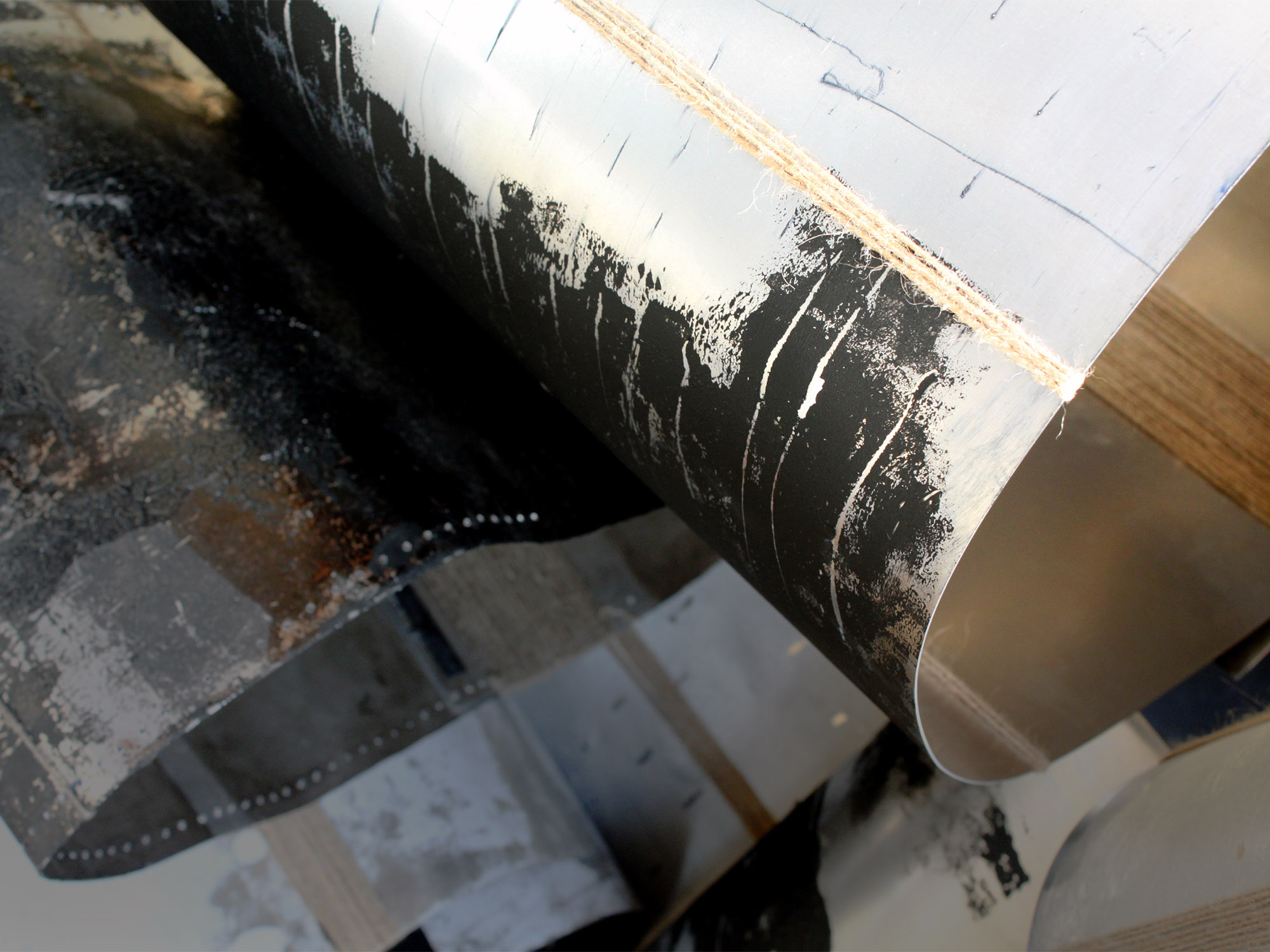
25-31 МАРТА / МАСТЕРСКАЯ АРТ-РЕЗИДЕНЦИИ (ЦРМ, 5 ВХОД)
25 МАРТА / 19:00 / ОТКРЫТИЕ / МАСТЕРСКАЯ АРТ-РЕЗИДЕНЦИИ (ЦРМ, 5 ВХОД)
Художник из Владивостока Андрей Дмитренко представит проект по итогам участия в арт-резиденции «Заря».
Проект Андрея посвящен состоянию неопределенности, которое так характерно для молодых жителей Владивостока. Несомненной и ярко выраженной местной тенденцией последних десятилетий является миграционный отток образованного и трудоспособного населения, усугубленный портовой спецификой города, где все – временно, изменчиво, не навсегда. Поневоле у молодых жителей возникает вопрос: оставаться или последовать примеру знакомых и уехать? При этом окружающая реальность не дает однозначного ответа, и поиски направляющих движение маяков, сигналов к действию остаются индивидуальной ответственностью каждого, кто задается этим вопросом.
Метания и сомнения, характерные для общества с отсутствующими или искусственно привитыми ценностями и критериями, свойственны и самому художнику как представителю поколения молодых людей, родившихся и выросших во Владивостоке. Проект становится отражением этой ситуации и попыткой уловить сигналы – в словах своих друзей и ровесников, точно так же спрашивающих себя о своем настоящем и будущем.
ВХОД СВОБОДНЫЙ
On March 18, the Zarya Center for Contemporary Art will present a solo exhibition of the Japanese artist Michiko Tsuda. Titled “Observing Forest,” the exhibition will feature video works from the series Yeu & Mo, 2007-2009, as well as the installation You would come back there to see me again the following day, 2016.
“Observing Forest” will not only mark the first time Michiko Tsuda’s works have been shown in Russia, it will also serve as a continuation of the discussion around the representation of the concept of movement in art, put forward by “Perpetuum Mobile,” a survey exhibition of Russian kinetic art, which opened in Zarya in February.
At the beginning of the 20th century – an era under the general spell of movement and acceleration – the form in motion came into its own as an aesthetic device, whose formal possibilities would be mined and explored for the better part of the next century. A hundred years later, we have reached the point where we must now deconstruct the movement that brought about these new forms and experiences, breaking it down in basic elements that can be analyzed. The works by Michiko Tsuda offer a kind of a laboratory for the study of the form in motion and its perception by the viewer. In Tsuda’s case, this experiment is conducted on the image, on the subject matter and on the system in which these types of communications exist, all at the same time.
Tsuda’s experiments operate within two distinct disciplines: performance, for which the key moment hinges on the direct experience of the presence of the body in time and space, under a given set of circumstances; and new media art, directed towards the fixation and transmission of information (in this case, the experience of the body.)
The video series, Yeu & Mo, 2007-2009, takes its title from the exchange of elements in two images optically merged through the structural composition of Tsuda’s video work. The visitor is invited to view a video projection, showing the events occurring inside a complex installation, in which people and objects are captured by video cameras swinging like pendulums. Along their trajectory, these cameras simultaneously record and show both sides of the nearly symmetrical pavilion. The visitor is invited to interact not with the complex architectural space constructed by Tsuda, but rather with the image of that space as it appears on film. This footage is optically merged in such a way that we must negotiate a composite image that does not bring reality closer to us, but rather creates a distance between the viewer and his or her surrounding environment – a medial divide.
This divide is artificially generated with the help of the media employed and technical equipment capable of facilitating the transition of our perception of a world in motion – a world with rules governing the physical trajectory and position of an object – to a media world of distortion and interference, in which reality is not negated, but rather transformed into something virtual and inaccessible. In this sense, any movement or alteration of an image (or position, or form) of an object can appear only as a means of distancing oneself from that object. In short, any movement is a form of distance.
In this media world, the subject is primarily ethereal, something that one can absorb, but not control. In its title, Yeu & Mo revels in a slippage of individual autonomy, as the viewer begins to take on attributes of the other information directed at them. That is, they are gradually confronted with the same ether into which their body has been transformed. In doing so, the viewer must resign to a kind of optical immateriality; their body no longer solely belongs to themselves, thus rendering them incapable of warding off the optical intrusions of external influences. All semblance of privacy or autonomy is lost.
The installation, You would come back there to see me again the following day, 2016, launches an ambitious inquiry into the nature of privacy in media, but the true experience of the work is only possible through movement. Moving through the space amid Tsuda’s suspended frames, the viewer simultaneously appears within them through the use of various media, each of which adds a new effect to the situation. Within the frames, the viewer confronts their own reflection, either as a mirror as a projection from the surveillance camera. While initially this could serve as a surprise or an amusement to the viewer, they eventually grow accustomed to the idea that they are in a zone of total surveillance. It is in that moment that their gaze might “slip” into the emptiness of the frames that do not reflect the viewer, but rather offer a view of what is behind them.
What emotions do we experience when we feel a camera lens directed upon us? Even if it is filming us against our will, do we not still find ourselves performing as an object, rather than taking on the role as a subject of someone else’s attention? Michiko Tsuda’s experiments suggest that our perception of ourselves is blurred by our representation within media; but at the same time, the media field, which can appear as aggressive – the lurking threat of a forest – is nothing more than our own reflection. There is no single interpretation for Tsuda’s works, however. Just as with the dark thickets of the forest, the subject has two options: to watch or to be watched.
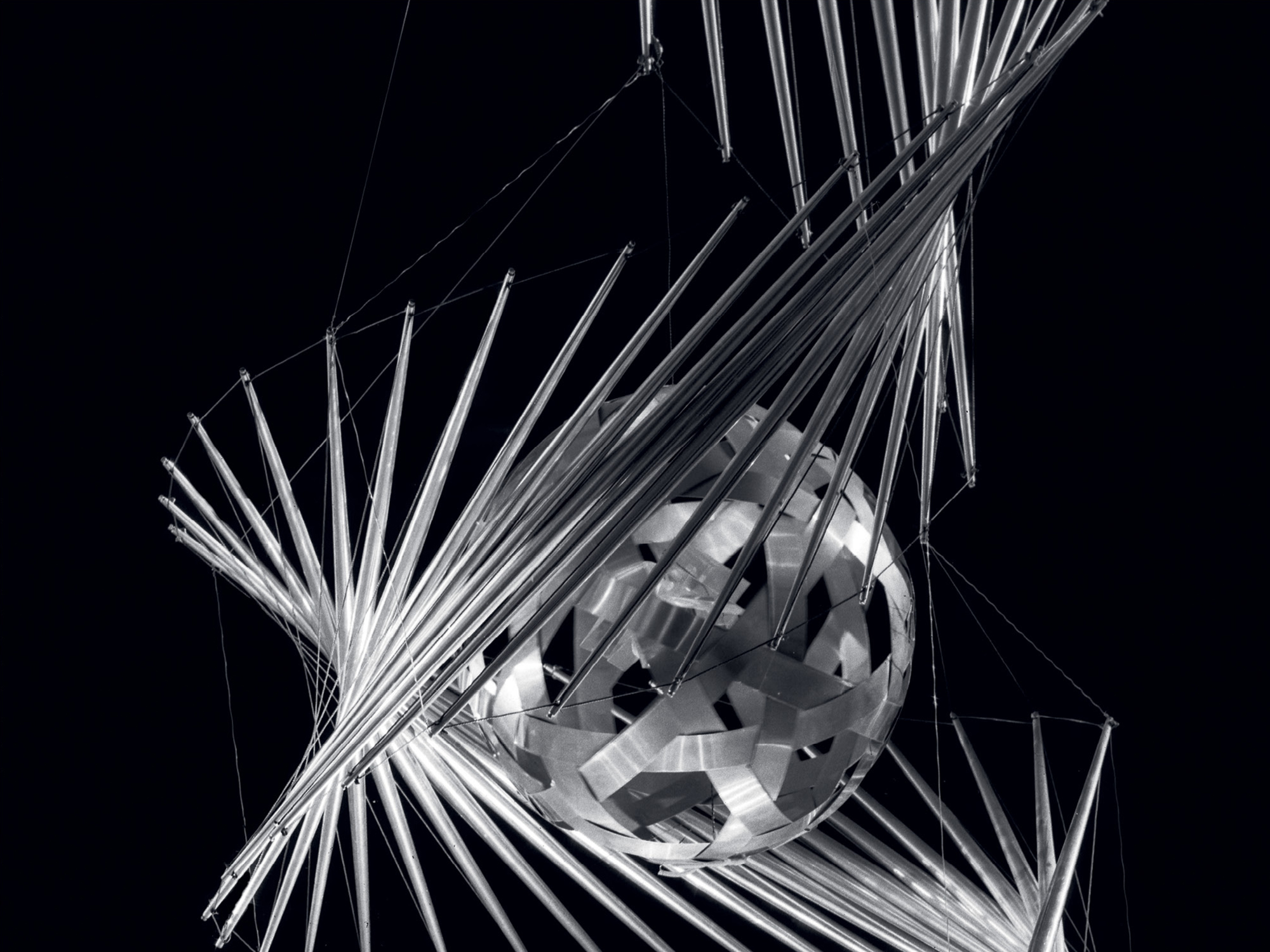
On February 3, the Zarya Center for Contemporary Art will launch its latest exhibition, “Perpetuum Mobile: Russian Kinetic Art”, a retrospective of one of the most fascinating episodes in the history of Russian art, featuring works by kinetic artists from the Avant-Garde to the present day.
“Perpetuum Mobile” embarks on an unprecedented attempt to understand the scale and significance of this movement, taking a comprehensive look at Kineticism from the moment of its inception up until today.
The contours of the relatively cohesive art historical movement known as Kinetic Art originally took form in the Western art of the 1950s. It was at this time that terms like “kineticism,” “kineticists”, and “kinetics” (all deriving from kinesis, the Greek word for “movement”) first came to be used in an art historical context. These terms heralded a new type of creator: the artist-engineer, attempting to inject art with movement, through the help of mobiles, mechanical and optical devices. The roots of this movement, however, can be traced back to the Russian Avant-Garde, working at the beginning of the 20th century.
The first work of purely Kinetic Art could be Naum Gabo’s mobile, Kinetic Construction (Standing Wave), created in 1919-1920 in Moscow. The artist’s goal with the piece was to try to advance movement and dynamic rhythm as its own aesthetic category.
Kineticism developed across disciplines, combining elements of art, design, architecture and music, while also engaging with stasis and dynamism, light and darkness, optic lenses, music, sound, and even occasionally silence. In this sense, as a movement that draws from the Russian Avant-Garde and involves multiple areas of art and culture, Kineticism proposes an incredible synthesis at the intersection of the arts, while also acting as a mirror for both technological progress and its human perception.
This exhibition reconstructs the history of the Russian Kinetic Art movement with the help of selected works from the collections of the State Tretyakov Gallery, the Moscow Museum of Modern Art, the Vladimir Mayakovsky Museum, the Shchusev Museum of Architecture, and the ROSIZO State Museum and Exhibition Centre, as well as the private collection of Mikhail Alshibaya, the personal archives of Natalya Theremin, the artist Sergei Zorin, and Andrei Smirnov, the director of the Theremin Centre at Moscow State Conservatory.
The exhibition marks the first time that the public in Vladivostok will be able to see pivotal works within the recent history of Russian art, such as the model for Vladimir Tatlin’s Monument to the Third International; Léon Theremin’s termenvox(later to be known simply as a “Theremin”); the famous “cyber-flowers” of Lev Nussberg and Sergei Zorin; the self-erecting constructions and experimental stereographs of Vyacheslav Koleichuk; Boris Stuchebryukov’s Galatea, a sculpture crafted from 22,500 razor blades; Leonid Borisov’s mobiles; German Vinogradov’s installation BiKaPo; and the light-and-sound objects of SKB (“Special Construction Bureau”) Prometheus. The exhibition also includes reconstructions of works by Naum Gabo, Gustav Klutsis and Aleksander Rodchenko, as well as lithographs by El Lissitzky and Kazimir Malevich. Rounding out this historical survey will be a series of new commissions from contemporary kineticists.
Participating Artists:
Naum Gabo, Vladimir Tatlin, Aleksander Rodchenko, Gustav Klutsis, Kārlis Johansons, Kazimir Malevich, Ilya Chashnik, Tavel Shapiro, El Lissitzky, Tatyana Makarova, Dziga Vertov, Alexander Ginsberg, Georgy Gidony, Georgy Krutikov, Konstantin Melnikov, Léon Theremin, Solomon Nikritin, Arseny Avraamov, Boris Yankovsky, The Movement Group, Lev Nussberg, Francisco Infante, Vyascheslav Koleichuk, Sergei Zorin, Alexander Grigoriev, Galina Bitt, Rimma Zanevskaya, Viktor Stepanov, Anatoly Krivchikov, Mikhail Dorokhov, Vladimir Akulinin, SKB Prometheus, Bulat Galeev, Yury Pravdyuk, Leonid Borisov, Boris Stuchebryukov, Mikhail Karasik, German Vinogradov, Roman Sakin, Pasha 183, Dmitry Morozov, Ilya Trushevsky
Curated by Polina Borisova
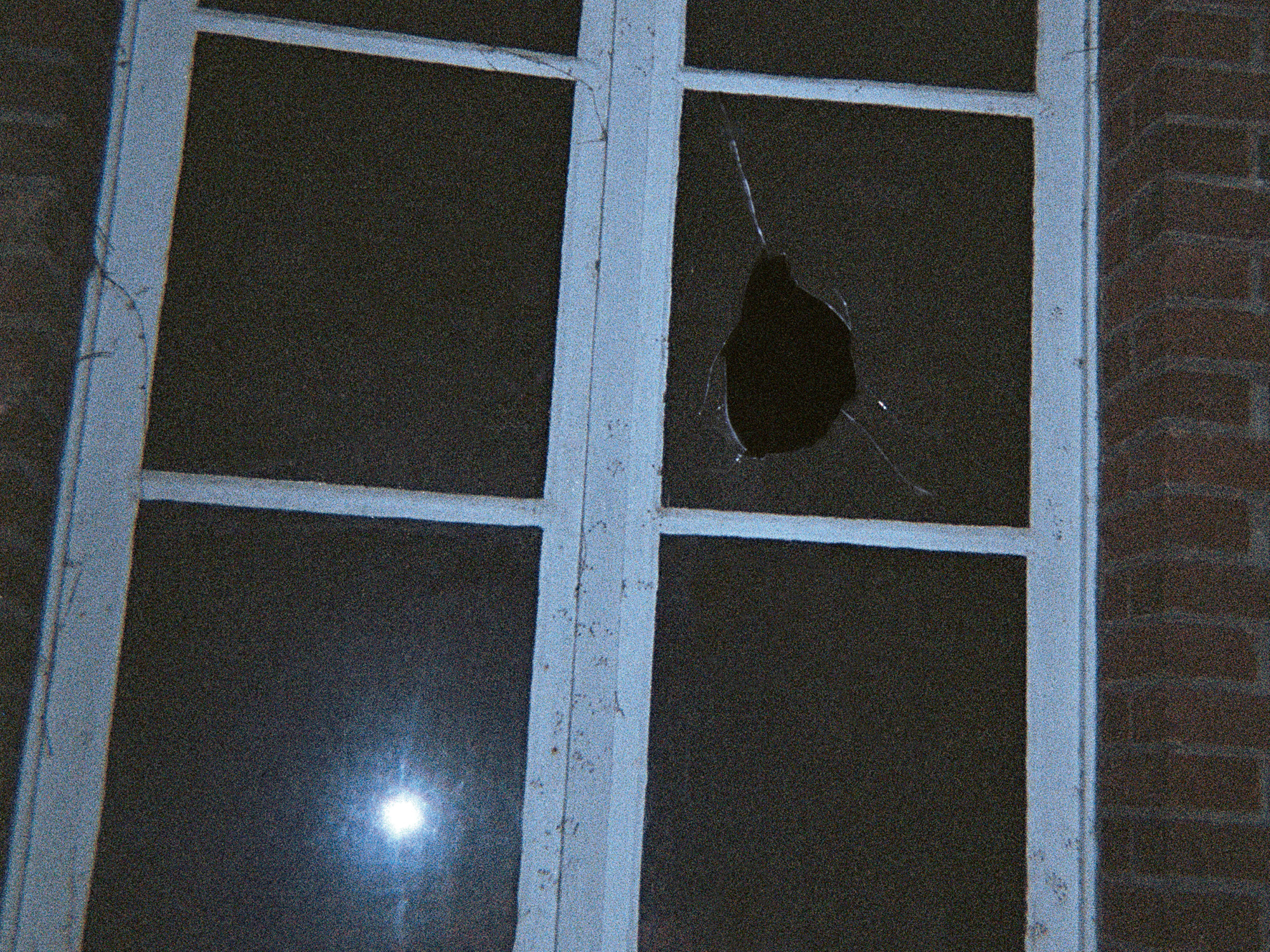
This exhibition marks German artist Fabian Knecht’s first solo show in Russia. One of the most prominent figures of Berlin’s contemporary art scene, Knecht works with temporal and spatial installations, performances and actions. This exhibition brings together works from different times, based on a critical understanding of reality and art systems on the microlevel of personal experience and everyday observations of particular enviromental and social conditions.
This exhibition is built around the notion of a lasting thing. The artist “animates” objects through intervening into daily life with situations that break from the conventional order of things, giving rise to new meanings and values within both object-oriented and social established and normalized relationship. At the same time, the exhibition attempts to undermine the power of museums and galleries as the primary sites for the production and distribution of art and thus places that effectively control the creation of new ideas.
The title of the exhibition – ZERBRECHUNG – has been lifted from one of the artist’s own works. It is a neologism Knecht generated by taking the verb zerbrechen (“to break, to destroy, to crack”), which describes the effect of the action, and transforming it into a noun through the addition of the suffix –UNG. The artist applies this method for naming his works that reflects one of the key principles of his practice: the objectification of actions, or the transformation of action within the work of art.
Simple in form, uncompromising and unmediated, Knecht's works presented in this exhibition purposefully stir up feelings of discomfort and anxiety in the viewer. Sometimes outsider-intrude
The lifespan of such works is always inherently limited and part of its existence is the speed of its forgetting. Deconstruction, disappearance, evanescence – these are the units of measurements within Fabian Knecht works. As the artist himself puts it, playing off the famous Mark Twain adage: they knew that it was a lost cause, and that’s why they did it.
CURATED BY ANASTASIA MARUKHINA
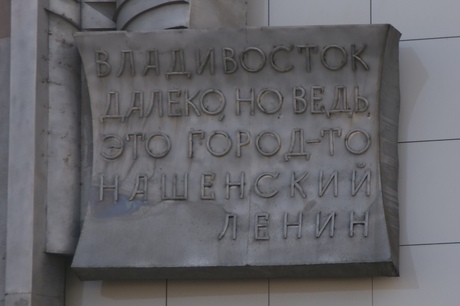
Yana Gaponenko, Inna Dodiomova, Roman Ivanischev, Kristina Norman, Aleksei Taruts, Ksenia Frolova; John Craig Freeman, Melissa Shiff & Louis Kaplan
Curated by Maria Kramar
The exhibition Absent Monuments develops on a curatorial project that started while in residence at Zarya CCA in 2015, when research into the local context, conducted alongside students of a month-long training course, sparked an interest in the idea of “nonmaterial monuments.”
Absent Monuments explores the material forms of memory existing today in the nonmaterial landscape of Vladivostok.
This line of thinking departs from the paper monument of the Colossus of Rhodes, the Ancient Greeks’ giant sculpture of the sun god, Helios, which – purportedly – stood guard over the port city of Rhodes. To this day, it remains authoritatively ranked as one of the Seven Wonders of the Ancient World, and yet there is no evidence of the actual physical existence of the monument. Moreover, we know neither the form, nor the exact location of the statue. The only available evidence of its existence – works of literature and fantasy paintings – are as credible a source as Ancient Greek mythology. Rather fascinatingly, in 2008, several different companies suddenly expressed an interest in reconstructing the sculpture, be it as a light installation or a mall.
Such utopian approach is quite typical for visionary architecture, a concept embodied not so much by the avant-garde projects of the Soviet architects of the 1980s, as by the negative monuments of Giovanni Battista Piranesi. The 18th century Italian architect produced countless etchings depicting imaginary landmarks, the capitals of columns on ancient buildings, sculptural fragments, sarcophagi, stone vases, candelabras, pavement tiles, tombstone inscriptions, architectural layouts, cityscapes, and more, though in his lifetime, he only ever erected one completed building. As Piranesi famously wrote, “They despise my novelty and humble birth, I their cowardly conservatism.”
However, one defining feature of visionary architecture is its default unbuildable function. Thus, the “paper” function is built-in from the start, allowing authors to embrace the technical complexity, scale, idealistic, utopian notion, and exorbitant costs of their projects. On the contrary, in our case, the lack of realization / death of a monument is spontaneous or unplanned quality / event, rather than intended.
The monument to Russian Navy Admiral Vasily Zavoyko, which was demolished and replaced by a statue of Bolshevik leader Sergey Lazo. Zurab Tsereteli’s plans to erect the world’s largest statue of Jesus Christ. A proposed memorial to whalers. The dismantled monument to Admiral Gennady Nevelskoy. Augmented reality Ararat memorial. The U.F.O. memorial in Estonia. What all of these episodes share is a common interest in addressing a memory that cannot be accessed through any other means? Is it possible for a monument – generally a massive object, containing historical – to function in an ephemeral environment, such as text, visual images, sound, or even smartphone apps? In such forms, could it still continue to serve as a repository for memory?
The curator and participants in this project will rely upon a two-way process – both the commemoration/de-commemoration and the absence/interruption of monuments – to start a discussion on the city’s historical heritage.
The exhibition will present art works alongside archival documents, photographs, and found videos, as well as commentary by historians, archivists and sculptors.
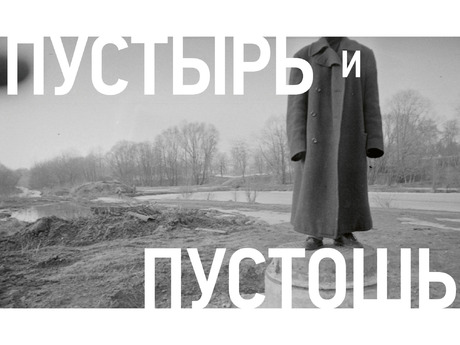
This exhibition of contemporary art is dedicated to one of the foremost features of both natural and urban landscapes in Russia – the badland stretches of vacant lots and wastelands, a familiar sight to any one who lives in our homeland.
A vacant lot is an excerpt of the city space, land abandoned to its own devices outside of cultural and administrative control. Wastelands are a similar phenomenon, only in the wilderness, not the city. They are a dead patch where trees no longer grow, the scorched or swampy ground overrun instead with thickets. The chaos of these badlands is near total. Any signs of the normal order of things are almost completely absent from these places. With no objects of any distinguishable value, the visitor’s eye wanders into the void of a formless, disintegrating space. Vacant lots and wastelands occur in all of the so-called “civilized countries,” but there the emptiness is only a temporary condition of the space, a pause between what came before (and has since disappeared), and what will soon be. They are rare, these flawed chunks of a long-tended territory. Russia belongs with those countries where the islands of careful landscaping are set adrift in seas of boundless chaos. Here the empty lots and barren stretches are permanent. Not only permanent, but expanding. They are a de facto feature of the Russian landscape, and yet most of our fellow countrymen are not inclined to recognize these badlands in a spiritual, cultural or civil sense, thereby granting them a right to a legal status as significant elements of the urban and natural environment. For one part of our society, vacant lots and wastelands, while inevitable, are considered to be lowbrow, even embarrassing phenomena, something like an outhouse, indecent to look at or discuss. Countering this is another part of society that prefers to indulge its inexplicable cravings for apocalyptic images of total ruin, an urge catered to either by the virtual worlds of computer games or in real life, with the rise of so-called “slum tourism.” But these people are also not looking at these empty lots through the context of their existence. Rather, this act of voyeurism, of peering into an exotic mirror, serves the diggers, stalkers, and the practitioners of Urbex, with their mighty online fanbases, by helping to create a mental distance from the blight surrounding them. Meanwhile, in Russian fine arts, already for the third century in a row we see the formation and development of the tradition of perceiving these badlands through identification (or recognition) as an allegory for the landscape of the “Russian World.” This tradition first took root with the nationalist landscapes of Romanticism and its search for a visual equivalent to genius loci, “the genius of place” – an intersection of natural, social and spiritual forces, that also encapsulated the daily life of the people. Together, these painters formulated a specific standard of context, which, like a trace or an imprint, is always produced by the given nation in whatever geographic region it may conjure. This identification of the Russian landscape with wastelands originates in Fyodor Vassiliev’s gloomy masterpiece, The Thaw. This type of landscape continued in the lyrical “little bridges” of Polenov and Korovin, while in the Soviet period, it lay at the base of the landscape painting of the Nonconformists, offering a natural alternative to the utopian visions of Communism. Wastelands were a frequent subject for the masters of the Underground, like Erik Bulatov, Oleg Vassiliev, Mikhail Roginsky, Dmitri Plavinsky and Semyon Faibisovich, as well as for conceptualists Ilya Kabakov, Vitaly Komar and Alexander Melamid, and Alexander Brodsky. In order to emphasize the continuity of this theme, this exhibition opens with works from several masters of the older generation, but the main focus is on those from the Post-Soviet period of Russian art. The artists in this exhibition primarily hail from Moscow and St Petersburg, with the exception of a talented duo of Latvian avant-gardists, Katrīna Neiburga and Andris Eglītis, who created a massive installation on “garage life” at the Venice Biennale in 2015. Vladivostok is represented in the exhibition through the works of the famous musician and artist-provocateur Pavel Shugurov, whose works will be displayed in metal garages, a defining feature of the vacant lots in this area. Throughout all of the works presented, the badlands of empty lots and barren stretches retain their original significance as allegories of Russian life, but the landscapes are no longer connected to the symbolism of social and existential crisis, alienation, abandonment, stagnation and powerlessness. Rather, we see these badlands in a more attractive light, as original spatial compositions within an environment full of fragments of unauthorized structures and historical ruins, populated by strays, weeds and occasional representatives from the disenfranchised and marginalized segments of the populations. Here these precarious folk are engaging not only in tender and carnal pleasures, but in a kind of industrial production. This unacknowledged world grants its inhabitants the freedom of a life unsanctioned and unrestricted. These places have their own aesthetics, based on the forms and textures which, in zones of order and discipline, might have negative connotations: dust, dirty snow, and mud, a viscous mix of smashed plastics, festering with random fragments and leftovers of their former life. These badlands offer a window into a history whose material witness has not yet been sanitized, as it has in other places, while also offering a view into the future, a shadowy utopia with which the elites regularly bait the population. The selected artists explore the morphology of these badlands, presenting the audience with a survey of the inverted optics of “the Russian outlook,” with which the inhabitants of these places perceive their worlds.
Participating Artists:
Kirill Ass, Blue Soup Group, Alexander Brodsky, Ilya Dolgov, Semyon Faibisovich, Sofia Gavrilova, Alexey Kallima, Vitaly Komar and Alexander Melamid, Elizaveta Konovalova, Elena Koptyaeva, Valery Koshlyakov, Ivan Lungin, Roman Mokrov, Vladimir Molochkov, Katrīna Neiburga and Andris Eglītis, Vikentin Nilin, Nikolai Ovchinnikov, Anton Olshvang, Pavel Pepperstein, Dmitri Plavinsky, Anastasia Potemkina, Mikhail Roginsky, Pavel Shugurov, Vitas Stasyunas, Ilya Trushevsky, Oleg Vassiliev, Anya Zhelud

4-20 СЕНТЯБРЯ / МАСТЕРСКАЯ АРТ-РЕЗИДЕНЦИИ
ВЕРНИСАЖ И ПЕРФОРМАНС: 4 СЕНТЯБРЯ / 19:00
Участник арт-резиденции «Заря» Константин Аджер и участники мастер-класса «Границы в современном искусстве» представят отчетный проект.
Название выставки отсылает к вопросу о границах восприятия и феноменах механизмов человеческого мышления. Художник задается вопросом, почему люди обращают внимание на определенные события и процессы, абсолютно игнорируя другие? Не уходит ли при этом из их поля зрения что-то не менее важное? Изучая психологию игнорирования и забвения, художник приходит к понятию слепой зоны.
В экспозицию, наряду с работами в жанрах видео- и саунд-арта, войдет также графика, а во время вернисажа в выставочных помещениях пройдет ряд перформансов. К примеру, экспериментальны
Аудиопроект «Яма» также изучает такое официально исключенное из процесса публичного исполнения музыки явление, как музыка антрактов, которая при всей вспомогательност
Участники мастер-класса «Границы в современном искусстве», прошедшего на прошлых выходных, также представят результаты своих исследований на тему границ в разнообразных медиа – от стриминг-видео до перформанса.
*Для справки: Константин Аджер, художник мультимедиа и современного искусства (Москва). Окончил Государственное Музыкальное Училище им. Гнесиных; Московский Государственный Институт Культуры (кларнет, саксофон); Заочный Университет Искусств (станковая живопись, графика); Международные Мастерские Театра Синтеза и Анимации "Интерстудио", Мастерская Юрия Соболева. Участник группы "Запасный выход" и программы "Escape". Принимал участие более чем в 50 выставках и проектах.
Вход свободный

13-14 АВГУСТА / МАСТЕРСКАЯ АРТ-РЕЗИДЕНЦИИ (ЦЕХ ЦРМ, ВХОД 5)
ВЕРНИСАЖ 13 АВГУСТА 19:00
Алексея Сухова многие знают как автора паблика «Мой поехавший день», но остались и фанаты другой стороны его творчества - объединения 3KP, одним из создателей и моторов которого был Сухов с 2006 по 2010 г. Сейчас Сухов живёт и работает в Москве, но приехав на несколько дней в город, в котором прошла его бурная и противоречивая юность, не смог удержаться от создания арт-объекта и выставки, на открытие которых мы вас приглашаем 13 августа в 19:00 в мастерскую Арт-резиденции (Цех ЦРМ, вход 5). На выставке будут представлены самые свежие работы Алексея Сухова. Даже во время отдыха дисциплинированный художник не нарушал свои давние традиции - создавать не менее одной работы в день и лучшие из них дополнять wow-текстом. Будучи оторванным от цивилизации, художник не имел возможности выкладывать работы в паблике «Мой поехавший день», поэтому первыми, кто оценит их, станут гости ЗАРИ. Две работы, созданные в мастерской арт-резиденции, выполнены в необычном для художника формате, но тем не менее, продолжают заданную автором художественную форму, которую он сам определяет, как «что-то среднее между комиксом, поэзией и журналистикой».
«Всё ещё держимся, но только благодаря тебе» А.Сухов
Алексей Сухов родился в 1987 г. в Лучегорске, где окончил художественную школу №1.
В 2004 г. поступил в ДВГУ на факультет графического дизайна. Во время учёбы увлёкся живописью и графикой.
В 2006 г. вместе с единомышленниками организовал творческое объединение 3KP, просуществовавшее до 2010 г. За время своего существования группа сняла несколько видеоработ: «Кацуба», «Губы волной», «Стефорге» и др.
В 2012 г. окончил курс иллюстрации в Британской Школе дизайна.
В настоящий момент проживает в Москве, где в феврале 2013 г. создал мультимедийный проект «Мой поехавший день», которым занимается на сегодняшний день.
В 2015 году прошла первая персональная выставка «Мой поехавший день» в ЦСИ «СОЛЬ», г. Владивосток
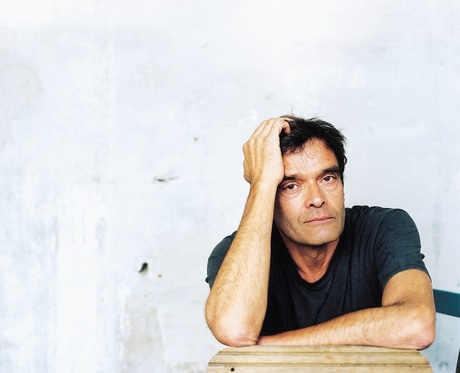
SEPTEMBER 9 – OCTOBER 30 2016
Vladivostok hosts a major exhibition and retrospective of works by the German artist Harun Farocki
From 9th September to 30th October 2016, Contemporary Art Center "Zarya" and "Pacific Meridian" International Film Festival in collaboration with Goethe Institute in Novosibirsk will present a major exhibition and retrospective of Harun Farocki in Vladivostok. It is for the first time in Russia that the work of this German documentary filmmaker can be seen in such depth.
So far, Russia has only seen a few works by the artist. The project "Harun Farocki. Something Else Becomes Visible" showcases a vast collection of his works to the Russian audiece for the first time. From 9th September to 30th October, Contemporary Art Center "Zarya" will exhibit five of Farocki’s installations, including the last ones - "Serious Games" and "Parallel". From 10th to 16th September, the "Pacific Meridian" Film Festival will present 16 of his films made between 1960s and 2000s.
This retrospective and exhibition will demonstrate three main themes in the work of Harun Farocki: state interventionism, workplace relationships in the modern world; and the image as a fulcrum for human perception of the world and of oneself.
Berlin-based film scholar, critic and the co-founder of the blog newfilkritik.de Michael Baute, who has worked with Harun Farocki for many years, will deliver introductory lectures for the retrospective and the exhibition. The project will also be accompanied by lectures of curators Tatiana Kiryanova (exhibition) and Andrey Vasilenko (retrospective) and audience discussions about the work of Harun Farocki and his methods.
A bilingual publication will supplement the project "Harun Farocki. Something Else Becomes Visible” with texts by the artist himself as well as by other contributors.
Having passed away in 2014, the artist has long been considered a definitive classic of political documentary and video art. His films and texts of the mid-sixties dedicated to the history of post-war Germany, were at the time perceived as a radical political and aesthetic experiment. In subsequent installations and texts, Farocki had sharply criticized the capitalist consumer society; only by the end of 1990s, his work has received its hard-earned wide recognition. Farocki’s ideas have shaped more than one generation of artists and media theorists.
The project is supported by:
- Institute of Harun Farocki (https://www.haru
- Goethe Institute in Novosibirsk;
- Festival "Pacific Meridian".